
Centaurea is a genus of over 700 species of herbaceous thistle-like flowering plants in the family Asteraceae. Members of the genus are found only north of the equator, mostly in the Eastern Hemisphere; the Middle East and surrounding regions are particularly species-rich. In the western United States, yellow starthistles are an invasive species. Around the year 1850, seeds from the plant had arrived to the state of California. It is believed that those seeds came from South America.

Centaurea solstitialis, the yellow star-thistle, is a member of the family Asteraceae, native to the Mediterranean Basin region. The plant is also known as golden starthistle, yellow cockspur and St. Barnaby's thistle The plant is a thorny winter annual species in the knapweed genus.

The Gnaphalieae are a tribe of flowering plants in the family Asteraceae. It is most closely related to the tribes Anthemideae, Astereae, and Calenduleae.
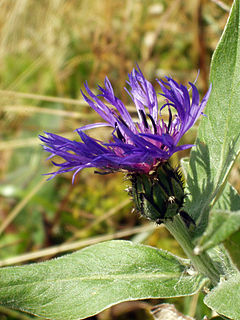
Centaurea montana, the perennial cornflower, mountain cornflower, bachelor's button, montane knapweed or mountain bluet, is a species of flowering plant in the daisy family Asteraceae, endemic to Europe. It is widespread and common in the more southerly mountain ranges of Europe, but is rarer in the north. It escapes from gardens readily, and has thereby become established in the British Isles, Scandinavia and North America. This plant has become an invasive species in British Columbia, Canada.
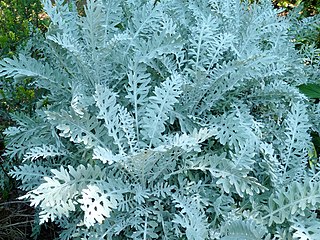
Centaurea cineraria, the velvet centaurea, is – like some other plants – also known as dusty miller and silver dust. It is a small plant in the family Asteraceae and originates from the Island of Capraia in Italy, where it is called fiordaliso delle scogliere.

Rhaponticum, is a genus of flowering plants in the thistle tribe within the sunflower family.

Femeniasia balearica is a species of flowering plant in the family Asteraceae (Compositae), and the only species in the genus Femeniasia.

Filago is a genus of plants in the sunflower family, native to Europe, Asia, and North Africa. They are sometimes called cottonroses or cudweeds.

Logfia is a genus of herbaceous plants in the tribe Gnaphalieae of the family Asteraceae, known as the field cottonrose.

The flowers of Centaurea tchihatcheffii are most attractive as the pale or dark pinkish-red marginal florets take on an iridescent shimmer in the sun and wind, hence the vernacular name Yanardöner, meaning ‘iridescent flower’. It flowers from late April to mid-June and in cultivation even earlier, e.g., March in Istanbul. The peak flowering period is mid-May and in earlier years it was sold in some quantity by street florists in Ankara. It is mainly bee-, bug- and beetle-pollinated. Ants play an important role in seed dispersal and the fully ripe fat achenes are a delight for pigeons which settle down to feed in large flocks. The species is of taxonomic interest as it has some rather unusual and unique features not existing in any other Centaurea. For example, the marginal florets are funnel-shaped with crenate margins. The anther-tube is provided with glands at the tips of the appendages.

As of 2000 about 9300 species of vascular plant were known to grow in Turkey. By comparison, Europe as a whole contains only about 24% more species, despite having thirteen times the area.
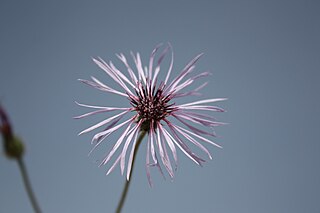
Volutaria is a genus of flowering plants in the. They range from Iberia to the Near East and East Africa, but are most diverse in the Maghreb.
Myopordon is a genus of flowering plants in the thistle tribe within the sunflower family.

Centaurothamnus is a genus of flowering plants in the daisy family.
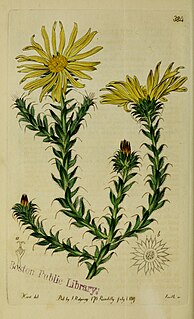
Cullumia is a genus of flowering plants in the daisy family.
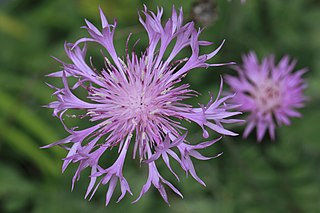
Psephellus bellus is a species in the genus Psephellus, subtribe Centaureinae, found in Anatolia and Transcaucasia. It is an evergreen plant, with gray-green to silvery imparipinnate leaves showing elliptic to ovate leaflets. It is used in gardening because the creeping stems can root in contact to the ground, and the plant grows slowly into a dense cover. The flowers are purplish pink and bloom from March to June.

Psephellus is a genus of flowering plants in the family Asteraceae, native to eastern Europe and western Asia. A taxonomic revision reassigned many species from Centaurea to Psephellus.
Erysimum deflexum, the bent treacle mustard, is a herbaceous plant, a member of the family Brassicaceae.
Limonium lilacinum is a Turkish species of flowering plant that usually occurs in central Anatolia. Limonium lilacinums local name in Turkey is "camel ear" or "barren lavender". Limonium lilacinum is a member of Limonium, the most common genus of the Plumbaginaceae family, which usually grows in salty soil. The Plumbaginaceae family has six genera in Turkey and Limonium is one of them. Many members of the family are of great importance in the medical, ecological, and ornamental plant industry. Limonium is a genus which is widespread around the world. There are around 600 species of this genus in the world. Limonium has 21 species in Turkey, and 9 of them are endemic, including Limonium lilacinum.
















